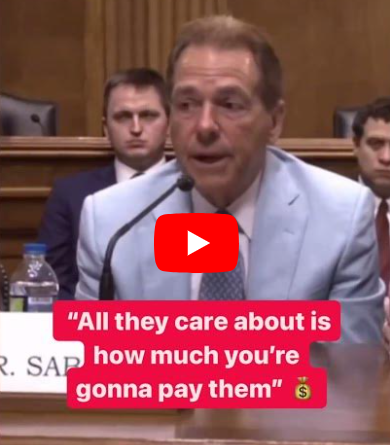Nick Saban is regarded as the best college football coach of all time. He had an amazing career, winning 7 national championships. This career came to an end a few months ago when he retired. He recently testified in front of the US Congress on the impacts of NIL (athletes being able to be paid for their name, image and likeness) at the collegiate level. The summary of Coach Saban’s testimony is that he retired from coaching because of NIL. He believes that NIL directly clashes with his intention to develop players over their collegiate career. He testified that incoming recruits and their parents are “only” interested in the money or package that the university can provide. Coach Saban no longer wanted to be a part of a system that prioritized the wrong things, so he retired.
Joe’s Perspective: The advantage of NIL is that players can receive a piece of the huge revenues that college athletics creates. In many ways this seems fair. However, at this point, it’s open season. There are basically no limitations. Does this hurt the competitive landscape of college sports? Does NIL interfere with the development of college athletes? Do the schools with huge financial resources get richer and the schools with less resources get poorer? Does NIL create inequities/jealousy on the team between a player who receives a million dollars and a player who receives nothing?
Your Turn: These are all great questions, all of which are above my pay grade. I’ll be interested to see how NIL progresses and is refined. I am also interested in how you, the younger generation thinks of this new NIL revolution. What do you think?
The post Weighing the Benefits and Negatives of NIL appeared first on Character and Leadership.
